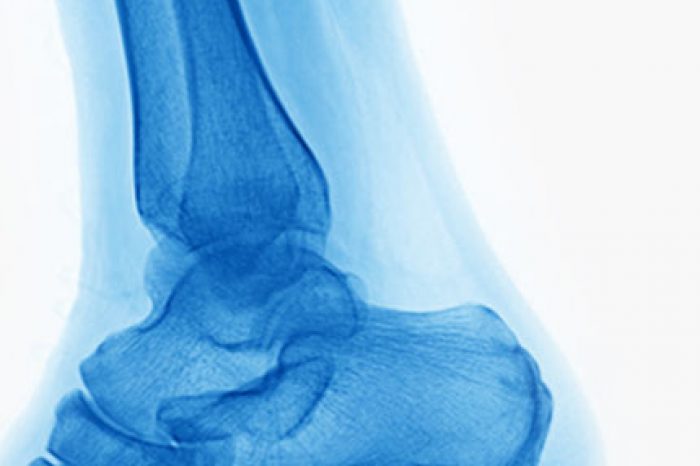

Plantar fasciitis can cause pain along the inside of the heel. Typically the pain is the worse in the morning, and physical examination is often enough to pinpoint the location of maximal tenderness. Treatment often consists of rest, shoe wear modification, NSAIDs, home stretching exercises, physical therapy, shoe inserts, and custom orthoses.
Corticosteroid injections around the insertion of the plantar fascia show only short-term benefit and may be associated with severe side effects as rupture of the plantar fascia, and infection (Acevedo & Beskin, 1998; Neufeld & Cerrato, 2008; Johnson et al, 2011; Wronka & Sinha, 2012).
Recent meta-analyses described ESWT as a safe and effective treatment of chronic plantar fasciitis refractory to nonoperative treatments (Dizon et al, 2014; Aqil et al, 2013).
In a recent randomized controlled study by Rompe et al. (2015), patients received radial shock wave therapy weekly for 3 weeks alone or in combination with an 8-week plantar fascia specific stretching program.
Patients with a clinical diagnosis of plantar fasciitis were enrolled and had failed conservative management. A total of 152 patients were enrolled in the study with 73 patients only having radial shock wave treatments and 79 patients had radial shock wave and a stretching program. The stretching program consisted of plantar fascia specific stretching exercises done 3 times daily holding the stretch for a count of 10 seconds for 8-weeks total.
Patients were assessed at 2-months, 4-months and 24-months, and while both groups reported an overall improvement in pain the group that received both shock wave and stretching did better at all follow-ups. More patients were satisfied with the combination of both treatments
This study suggests that while the mechanism of shock wave therapy is not fully understood, it seems to have activate and enhancement the healing process.
Acevedo JI, Beskin JL. Complications of plantar fascia rupture associated with corticosteroid injection. Foot Ankle Int. 1998
Feb;19(2):91-7.
Aqil A, Siddiqui MR, Solan M, Redfern DJ, Gulati V, Cobb JP.
Extracorporeal shock wave therapy is effective in treating chronic
plantar fasciitis: a meta-analysis of RCTs. Clin Orthop Relat Res. 2013
Nov;471(11):3645-52.
Dizon JN, Gonzalez-Suarez C, Zamora MT, Gambito ED. RE: Effectiveness of extracorporeal shock wave therapy in chronic plantar fasciitis. Am J Phys Med Rehabil. 2014 Aug;93(8):735.
Johnson JE, Klein SE, Putnam RM. Corticosteroid injections in the
treatment of foot & ankle disorders: an AOFAS survey. Foot Ankle
Int. 2011 Apr;32(4):394-9.
Neufeld SK, Cerrato R. Plantar fasciitis: evaluation and treatment. J Am Acad Orthop Surg. 2008 Jun;16(6):338-46.
Rompe JD, Furia J, Cacchio A, Schmitz C, Maffulli N. Radial shock wave
treatment alone is less efficient than radial shock wave treatment
combined with tissue-specific plantar fascia-stretching in patients with
chronic plantar heel pain. Int J Surg. 2015 Dec;24(Pt B):135-42.
Wronka KS, Sinha A. Calcaneal osteomyelitis following steroid injection
for plantar fasciitis: a case report. Foot Ankle Spec. 2012 Aug;5(4):253-5.
Adductor longus selective tenotomy is a modern surgical treatment for chronic groin pain that offers faster recovery and better outcomes than traditional full release surgery. The adductor longus, an inner thigh
Read MoreDiscover how ultrasound helps diagnose plantar fat pad atrophy, a leading cause of ball-of-foot pain. Learn about symptoms, thickness cutoffs, and why early detection matters for relief.
Read More